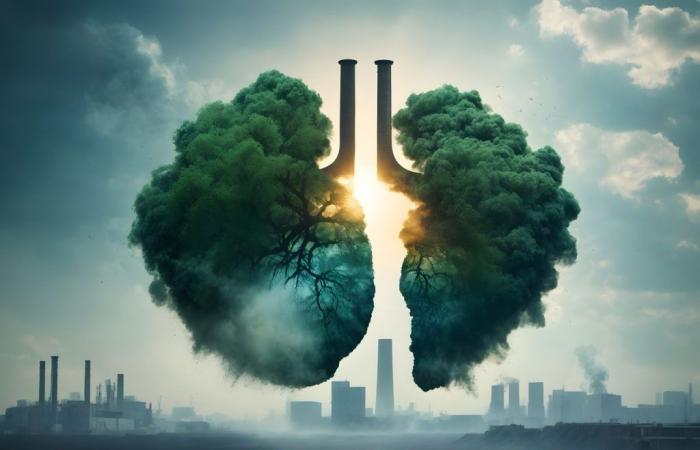In 2024, report highlights far greater dangers air pollution poses to childrencompared to tobacco and malnutrition.
Insidious enemy
Air pollution is a silent but deadly threat to children around the world. Unlike the visible and tangible dangers of tobacco and malnutrition, it is often invisible. Yet, Its effects are omnipresent. Fine particles (PM2.5 and PM10), nitrogen dioxide (NO2) and ozone (O3) are among the most harmful pollutants.
Children and young people are particularly vulnerable because their respiratory and immune systems are still developing.
Actually, The effects of air pollution begin during pregnancy. Some pollutants can cross the placental barrier, exposing the fetus to toxins. After birth, children continue to be exposed to high levels of pollution, particularly in regions with high levels of PM2.5 (fine particulate matter).
This exposure can lead to a multitude of health problems, including acute respiratory infections, asthma and neurodevelopmental disorders.
Key figures
The statistics are clear: the quality of the air we breathe must become a public health priorityThe report highlights that:
- 9 out of 10 children breathe polluted air.
- Environ 2.5 billion of children live in areas where air pollution levels exceed WHO guidelines.
- 600,000 deaths of children under five each year are due to air pollution.
- 30 % cases of childhood asthma are directly linked to air pollution.
Comparison with tobacco and malnutrition
In 2021, air pollution contributed to more than 700,000 deaths among children under five. Of these, more than 500,000 deaths were attributable to household pollution, mainly from the use of solid fuels for cooking.
By comparison, tobacco, although extremely dangerous, does not have the same direct impact on young children as air pollution.
It is true that malnutrition remains the leading cause of death among children under five, but air pollution is not far behind.. In 2021, it was the second risk factor for mortality in this age group.
Children living in polluted environments are more likely to contract severe respiratory infections, which can exacerbate the effects of malnutrition.
Solutions
In the face of this crisis, it is essential to adopt measures to reduce air pollution and protect vulnerable populations, particularly children.
- Reduce fossil fuel emissions : Significantly reducing the use of conventional energy in transport, industries and households can significantly reduce air pollution levels. We must encourage the deployment of renewable energies.
- Improve indoor air quality : Particularly in developing countries, it is vital to promote cleaner cooking methods and less polluting technologies for households.
- Raise awareness and educate : Educating the public about the dangers of air pollution and ways to reduce exposure can help change behavior and encourage pollution reduction policies.
- Monitoring and regulation : Governments must put in place strict regulations on pollutant emissions and ensure compliance. Continuous monitoring of air quality allows for rapid action to be taken if pollution thresholds are exceeded.






